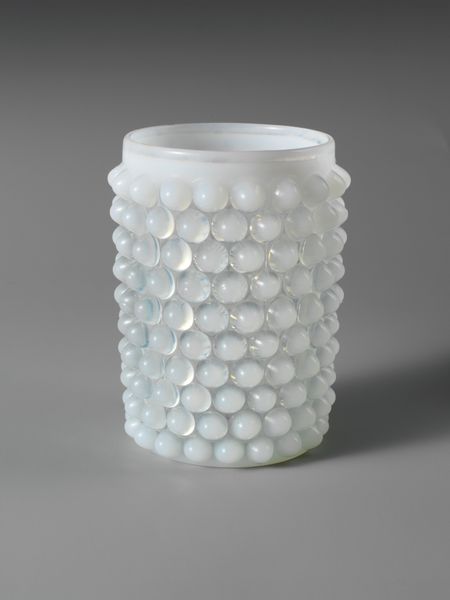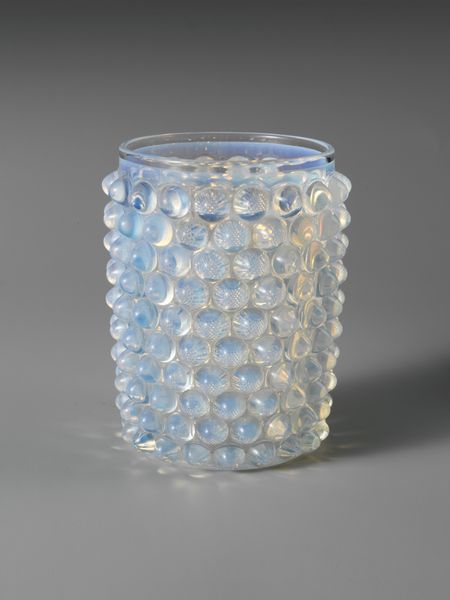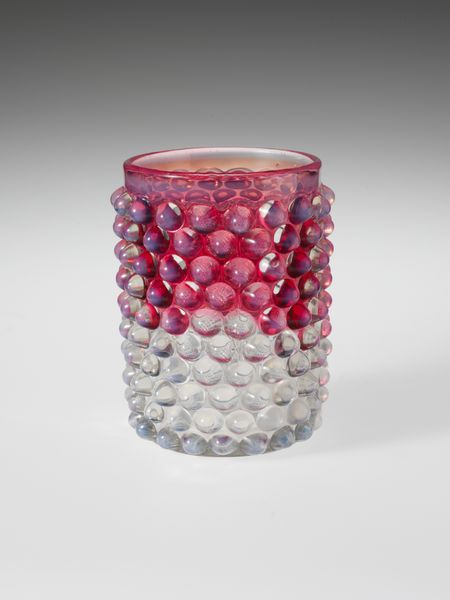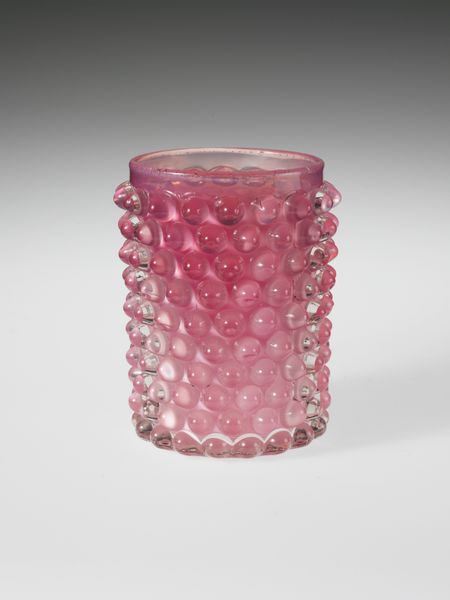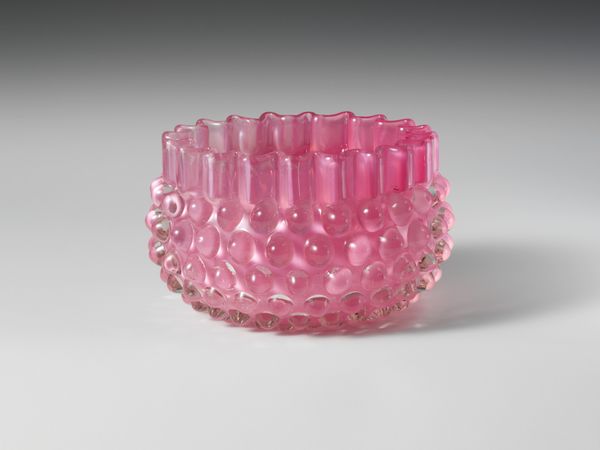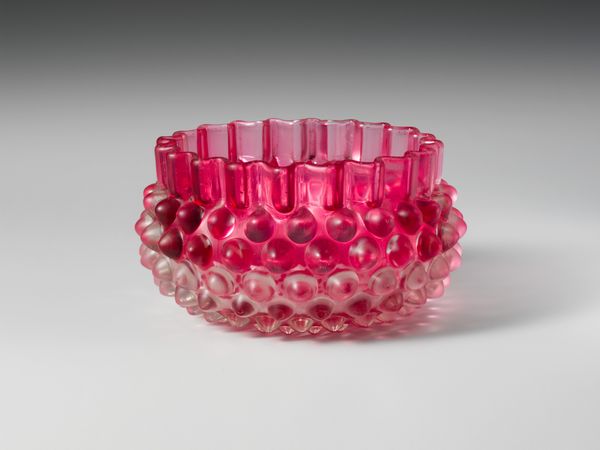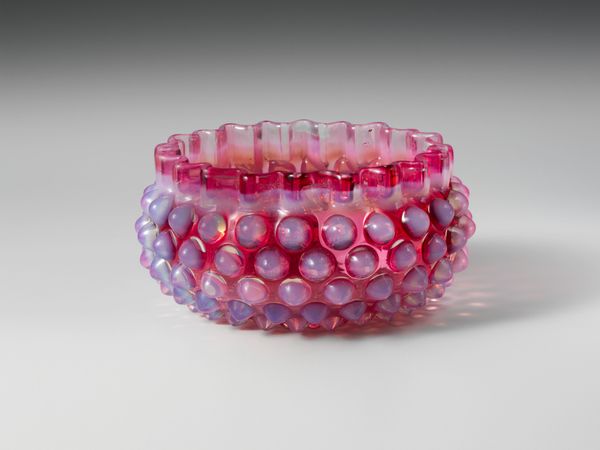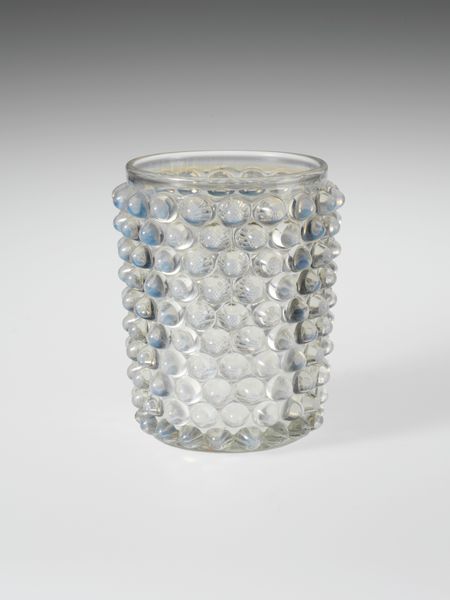
glass
#
glass
#
decorative-art
Dimensions: H. 6 3/4 in. (17.1 cm); Diam. 4 1/4 in. (10.8 cm)
Copyright: Public Domain
This "Hobnail Celery Vase" was made by Hobbs, Brockunier and Company in the late 19th century. It’s an example of pressed glass, meaning that molten glass was forced into a mold, allowing for mass production. The vase's surface is covered in a pattern of raised hemispherical “hobnails,” creating a tactile, almost prickly texture. The pink glass fades to white, giving it a soft, opalescent glow. This was achieved by adding chemical compounds to the glass mixture, and controlling the cooling process. The rise of pressed glass coincided with the Industrial Revolution, and the growth of a consumer culture. Suddenly, objects that had once been luxury items, like cut crystal, could be made cheaply and sold to a wider market. This vase is therefore more than just a pretty object; it’s a document of shifting tastes, and new possibilities afforded by industrialization. By attending to its materiality, processes, and social context, we can understand more about the meanings it holds.
Comments
No comments
Be the first to comment and join the conversation on the ultimate creative platform.
